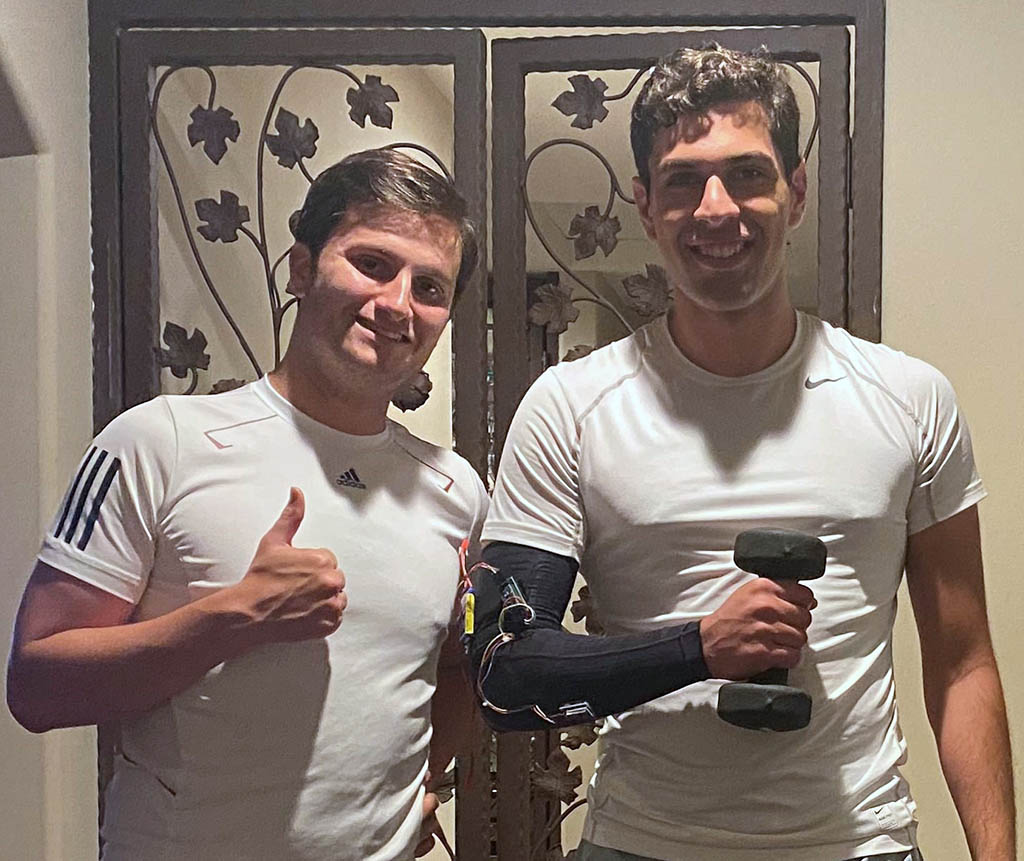As undergraduates in Stanford’s Biodesign for Digital Health course, teammates Ryan Kalili and James Savoldelli set out to help injured athletes do their homework — not their academic homework, but the part of their prescribed physical therapy regimen that must be done regularly at home to maximize healing.
“On average, six months of PT is needed after an injury like a ligament tear in the knee,” said Savoldelli. “A significant share of this has to be done at home, but people find the exercises tedious and the experience lonely. As a result, most patients ‘self-discharge,’ in less than three months, leading to poor outcomes and a high rate of reinjury.”
Kalili and Savoldelli uncovered this problem while searching for an important unmet need to address for their class project.
“We give the students a general area to investigate — in this case orthopaedics,” explained lead instructor Oliver Aalami, MD, a Stanford Medicine vascular surgeon and an experienced digital health inventor. “Then they follow the biodesign process to uncover real problems in care, understand them deeply and then create a novel solution using digital technology.”
Learning about the problem
To get started, Kalili and Savoldelli interviewed numerous Stanford Health Care clinicians and surveyed patients who had received orthopaedic care. “It was the interviews with students that led us to focus on pain points in PT,” said Kalili. “Resistance to doing exercises at home came up over and over, so we set out to learn as much as we could about the problem.”
Kalili and Savoldelli decided to focus on young athletes as their initial target population. “There’s a trend of increasing athleticism and related injuries in younger people,” said Savoldelli. “Additionally, this group is highly tech-savvy and likely to find a digital solution appealing.”
The team’s first solution concept was to increase patient engagement and adherence by creating a virtual competitive community among physical therapy patients. Over time, however, they realized their idea could offer an even bigger benefit by also helping patients do their at-home exercises more accurately.

